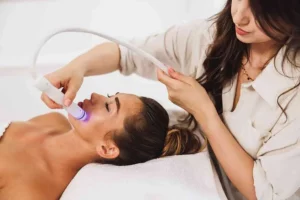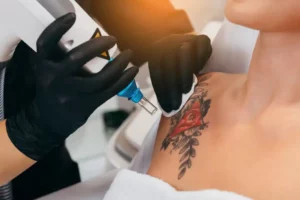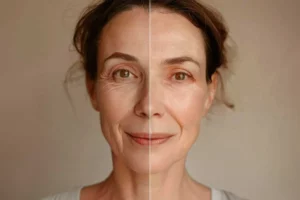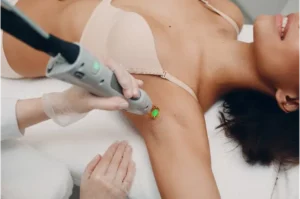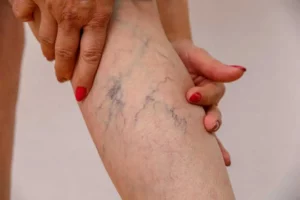Botox is widely recognized for its aesthetic applications, particularly in smoothing wrinkles and fine lines. However, its utility extends beyond cosmetic enhancements. Did you know Botox has also received FDA approval for its effectiveness in preventing chronic migraines? Finding a reliable preventive approach becomes a high priority for those who grapple with frequent headaches, each lasting at least four hours. Botox has shown its ability to reduce the number of headache days and improve overall well-being. Here’s what you should know.
What is Chronic Migraine?
Chronic migraine is a medical condition characterized by frequent and severe headaches that significantly affect an individual’s quality of life. According to the International Classification of Headache Disorders (ICHD-3 beta), a chronic migraine is defined as experiencing headaches on at least 15 days per month, with at least 8 of those days meeting the criteria for migraines. This pattern must persist for over three months to be classified as chronic.
The criteria for diagnosing a migraine include moderate to severe headache pain often accompanied by other symptoms such as light sensitivity, noise sensitivity, or nausea. However, it’s worth noting that the FDA’s prescribing information for Botox in treating chronic migraines does not strictly adhere to these criteria. For approved use of Botox, chronic migraine is described as experiencing headaches—with any characteristics—on at least 15 days per month, each lasting for a minimum of four hours.
What is Botox?
Botox is the brand name for Onabotulinumtoxin A, an injectable protein synthesized by the bacterium Clostridium botulinum. While it’s most commonly known for its aesthetic applications, such as lessening wrinkles and fine lines, Botox also has a range of medical uses. It paralyzes the muscles it injects, thereby blocking nerve signals that cause muscle contractions.
In chronic migraines, Botox is believed to function by inhibiting pain-signaling transmission between the head and neck and the central brain, where migraines are generated. This mechanism of action makes it a unique option for those seeking preventive treatment for chronic migraines.
Botox is not a cure for migraines. Rather, it serves as a preventive measure that can ease the frequency and severity of migraine episodes, thereby improving the quality of life for those who suffer from this debilitating condition.
How is Botox Administered for Migraines?
For the treatment of chronic migraines, Botox is administered through a series of injections following a standardized protocol known as the PREEMPT (Phase III Research Evaluating Migraine Prophylaxis Therapy) protocol. This involves injecting small quantities of Botox at specific locations on the forehead, sides of the head, and back of the head and neck. In total, 31 injections of 5 units each are placed at these prescribed locations.
The injections are subcutaneous, meaning they are just under the skin and create a small bubble or wheal at the site. These injection sites are usually visible for a few hours. The total amount of Botox approved by the FDA for chronic migraine prevention is 155 units. However, Botox typically comes in vials of 100 or 200 units. Some practitioners may offer to administer the remaining units in areas where patients particularly experience pain, although the efficacy of this additional treatment still needs to be fully established.
Healthcare providers administering Botox for migraines are specially trained in the PREEMPT protocol to ensure the treatment’s safety and effectiveness. The entire injection process takes about 10-15 minutes, and patients can generally resume normal activities shortly afterward.
Effectiveness of Botox for Migraines
The study, published in The Journal of Headache and Pain, focused on adults struggling with chronic migraines that were not adequately controlled by other treatments. After just two cycles of Botox treatment, a striking 74% of participants achieved a reduction of 50% or more in their monthly headache days. Even when accounting for statistical variability—indicated by a 95% confidence interval ranging from 68% to 80%—the results remained robust.
This statistic is particularly striking because it suggests that Botox could offer substantial relief for a large majority of people suffering from chronic migraines. Imagine cutting your monthly migraine days in half or more; that’s what happened for nearly three-quarters of the study participants after just two treatment cycles. And the confidence interval suggests that this wasn’t just a fluke—the treatment is consistently effective for most people.
While the study’s findings are indeed promising, it’s worth noting that individual experiences with Botox can vary. Some people might find relief soon after their first set of injections, while others may undergo multiple treatment cycles to see a significant improvement.
Frequently Asked Questions
Whether you’re considering this treatment option for the first time or are already familiar with its benefits, you may wonder about the specifics. From the timing of results to handling aftercare, we’ve compiled a list of frequently asked questions to provide you with the information you need to make an informed decision.
When Do You See Results?
According to both the American Migraine Foundation and AbbVie, the effectiveness of Botox for migraines can take time to manifest. Patients often report seeing relief within two to three weeks after the first treatment. However, maximum benefits are usually observed after the second or third treatment cycle.
How Many Treatments Do I Need?
Botox treatments for migraines are generally administered every 12 weeks. The number of treatments you may need can vary based on the severity of your migraines and your response to the initial treatment. One treatment typically involves 31 injections in seven key areas of the head and neck.
Are There Side Effects?
Common side effects include sore neck, pain at the injection site, and temporary muscle weakness. These side effects are usually temporary and resolve on their own.
How Should I Handle AfterCare?
After receiving Botox injections, avoiding strenuous activities and direct sunlight for a short period is advisable. An ice pack can help reduce discomfort or soreness in the neck area.
Takeaway
Ready to take the next step in managing your chronic migraines? Skynn MD is here to help. Our team is experienced in administering Botox treatments for migraine prevention. Don’t let migraines hold you back any longer. Book an assessment with Skynn MD today and discover how Botox could improve your quality of life.




